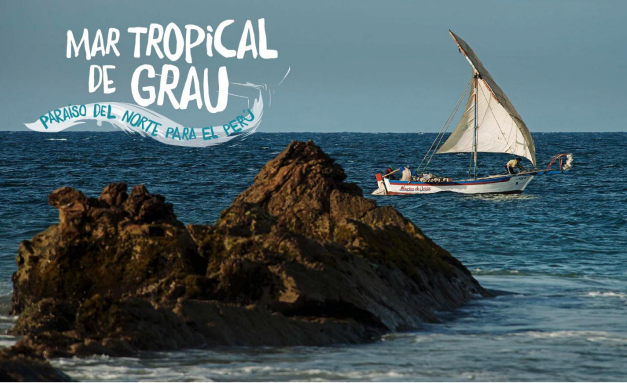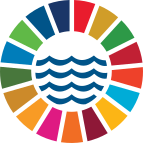Elaboration of the Master Plan for the Mar Tropical de Grau National Reserve
National Protected Natural Areas Service - SERNANP
(
Government
)
#OceanAction58672
Description
Through Directorial Resolution No. 011-2024-SERNANP-DDE, dated May 20, 2024, SERNANP incorporated the Mar Tropical de Grau National Reserve into the list of Natural Protected Areas (NPAs) eligible to begin the process of preparing or updating Master Plans in 2024. The Master Plan processes, characterized by being broadly participatory, comprises three (3) stages: i) preliminary, ii) formulation and iii) approval. In addition, together with the ANP Management Committee's Executive Commission, the current situation and proposed elements of the ANP have been reviewed and the Terms of Reference have been approved, and finally, the Master Plan development process is led by the protected natural area's management.
Within the Mar Tropical de Grau National Reserve, based on information provided by the Ministry of Production (PRODUCE) and its scientific body (Instituto del Mar del Perú - IMARPE), and various working meetings with the relevant sectors, it has been identified that the geographical area of the RNMTG is an important area for artisanal fishing by the surrounding population, which is affected by illegal fishing within 5 miles, overfishing of key species (e. g. high trophic level predators) and commercial species that alter the food chains, which negatively affect ecosystem functioning. The area is affected by illegal fishing within 5 miles, overfishing of key species (e.g. high trophic level predators) and commercial species that alter the food chains, which negatively affect ecosystem functioning. There is also evidence of an increase in tourism activity due to the area's potential for mammal, turtle and marine bird watching, as well as the attractiveness of the beaches adjacent to the proposed NPA and its areas for recreational diving, which is why a protected natural area planning document is necessary.
Through DIRECTORAL RESOLUTION N° 119-2024-SERNANP-DGANP, dated July 22, 2024, the Management Committee of the Mar Tropical de Grau National Reserve was recognized. The management committee is a space for voluntary participation that brings together different social actors, from local authorities, public and private institutions, civil organizations, and the local population, who carry out activities in favor of the protected natural area under a joint and multidisciplinary work.
As part of this process, the members of the Executive Committee of the Management Committee were elected for the period 2024-2026, with Filipenses Tours as president, the Regional Federation of Selective Artisanal Fishing Organizations of Cortina, Pinta and Espinel de Tumbes (FEROPAS-T) as vice-president and the Head of the Grau Tropical Sea National Reserve as technical secretary. The coordinators of the four (04) sectors that make up the Grau Tropical Sea National Reserve were also elected. The Cabo Blanco - El Ñuro sector is coordinated by the Cabo Blanco Pioneros del Pacífico S.A. hydrobiological products company, In the sector of Isla Foca Turisla Foca, in the sector of Banco de Máncora the Asociación de Balsilleros de Canoas de Punta Sal and in the sector of Arrecifes de Punta Sal the Asociación de Pescadores Artesanales y Releros de Canoas de Punta Sal.
SERNANP
SDGS & Targets
Goal 14
Conserve and sustainably use the oceans, seas and marine resources for sustainable development
14.1
By 2025, prevent and significantly reduce marine pollution of all kinds, in particular from land-based activities, including marine debris and nutrient pollution
14.1.1
(a) Index of coastal eutrophication; and (b) plastic debris density
14.2
By 2020, sustainably manage and protect marine and coastal ecosystems to avoid significant adverse impacts, including by strengthening their resilience, and take action for their restoration in order to achieve healthy and productive oceans
14.2.1
Number of countries using ecosystem-based approaches to managing marine areas
14.3
Minimize and address the impacts of ocean acidification, including through enhanced scientific cooperation at all levels
14.3.1
14.4
By 2020, effectively regulate harvesting and end overfishing, illegal, unreported and unregulated fishing and destructive fishing practices and implement science-based management plans, in order to restore fish stocks in the shortest time feasible, at least to levels that can produce maximum sustainable yield as determined by their biological characteristics
14.4.1
14.5
By 2020, conserve at least 10 per cent of coastal and marine areas, consistent with national and international law and based on the best available scientific information
14.5.1
14.6
By 2020, prohibit certain forms of fisheries subsidies which contribute to overcapacity and overfishing, eliminate subsidies that contribute to illegal, unreported and unregulated fishing and refrain from introducing new such subsidies, recognizing that appropriate and effective special and differential treatment for developing and least developed countries should be an integral part of the World Trade Organization fisheries subsidies negotiation
14.6.1
Degree of implementation of international instruments aiming to combat illegal, unreported and unregulated fishing
14.7
By 2030, increase the economic benefits to Small Island developing States and least developed countries from the sustainable use of marine resources, including through sustainable management of fisheries, aquaculture and tourism
14.7.1
Sustainable fisheries as a proportion of GDP in small island developing States, least developed countries and all countries
14.a
Increase scientific knowledge, develop research capacity and transfer marine technology, taking into account the Intergovernmental Oceanographic Commission Criteria and Guidelines on the Transfer of Marine Technology, in order to improve ocean health and to enhance the contribution of marine biodiversity to the development of developing countries, in particular small island developing States and least developed countries
14.a.1
14.b
Provide access for small-scale artisanal fishers to marine resources and markets
14.b.1
Degree of application of a legal/regulatory/policy/institutional framework which recognizes and protects access rights for small‐scale fisheries
14.c
Enhance the conservation and sustainable use of oceans and their resources by implementing international law as reflected in United Nations Convention on the Law of the Sea, which provides the legal framework for the conservation and sustainable use of oceans and their resources, as recalled in paragraph 158 of "The future we want"
14.c.1
Number of countries making progress in ratifying, accepting and implementing through legal, policy and institutional frameworks, ocean-related instruments that implement international law, as reflected in the United Nations Convention on the Law of the Sea, for the conservation and sustainable use of the oceans and their resources
SDG 14 targets covered
| Name | Description |
|---|---|
| 14.2 | By 2020, sustainably manage and protect marine and coastal ecosystems to avoid significant adverse impacts, including by strengthening their resilience, and take action for their restoration in order to achieve healthy and productive oceans |
| 14.5 | By 2020, conserve at least 10 per cent of coastal and marine areas, consistent with national and international law and based on the best available scientific information |
Deliverables & Timeline
Resources mobilized
Partnership Progress

Feedback
Action Network

Timeline
Entity
SDGs
Other beneficiaries
Ocean Basins
Communities of Ocean Action
Website/More information
Countries

Headquarters
Contact Information
José Carlos , Head of SERNANP

